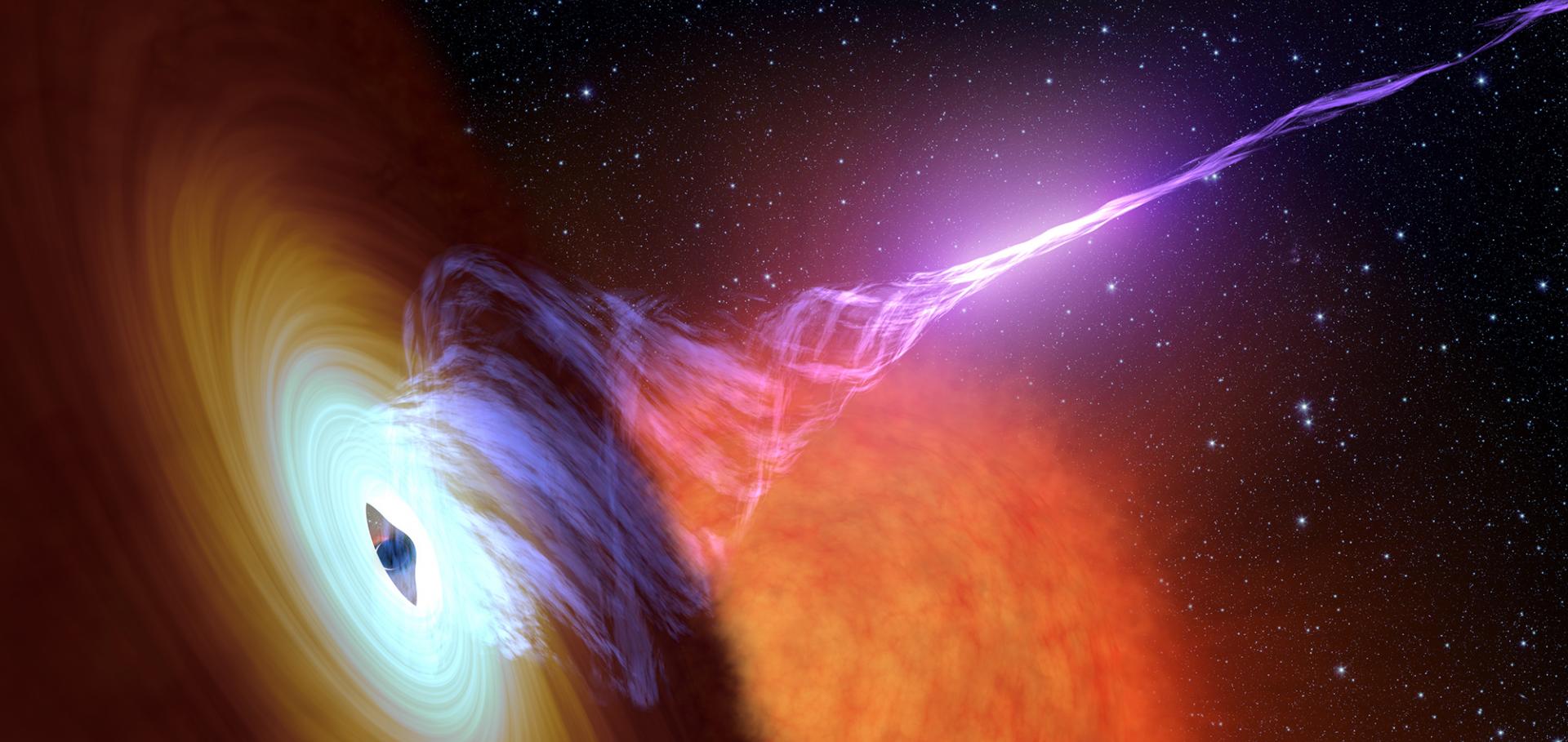A MeerKAT view of the parsec-scale jets in the black-hole X-ray binary GRS 1758-258
(2025)
Relativistic precessing jets powered by an accreting neutron star
Monthly Notices of the Royal Astronomical Society: Letters Oxford University Press 544:1 (2025) L37-L44
Abstract:
Precessing relativistic jets launched by compact objects are rarely directly measured, and present an invaluable opportunity to better understand many features of astrophysical jets. In this Letter we present MeerKAT radio observations of the neutron star X-ray binary system (NSXB) Circinus X-1 (Cir X-1). We observe a curved S-shaped morphology on scales in the radio emission around Cir X-1. We identify flux density and position changes in the S-shaped emission on year time-scales, robustly showing its association with relativistic jets. The jets of Cir X-1 are still propagating with mildly relativistic velocities from the core, the first time such large scale jets have been seen from a NSXB. The position angle of the jet axis is observed to vary on year time-scales, over an extreme range of at least . The morphology and position angle changes of the jet are best explained by a smoothly changing launch direction, verifying suggestions from previous literature, and indicating that precession of the jets is occurring. Steady precession of the jet is one interpretation of the data, and if occurring, we constrain the precession period and half-opening angle to yr and , respectively, indicating precession in a different parameter space to similar known objects such as SS 433.Relativistic precessing jets powered by an accreting neutron star
(2025)
The peculiar hard state behaviour of the black hole X-ray binary Swift J1727.8−1613
Monthly Notices of the Royal Astronomical Society Oxford University Press 542:3 (2025) 1803-1816
Abstract:
Tracking the correlation between radio and X-ray luminosities during black hole X-ray binary outbursts is a key diagnostic of the coupling between accretion inflows (traced by X-rays) and relativistic jet outflows (traced by radio). We present the radio–X-ray correlation of the black hole low-mass X-ray binary Swift J1727.8–1613 during its 2023–2024 outburst. Our observations span a broad dynamic range, covering 4 orders of magnitude in radio luminosity and 6.5 in X-ray luminosity. This source follows an unusually radio-quiet track, exhibiting significantly lower radio luminosities at a given X-ray luminosity than both the standard (radio-loud) track and most previously known radio-quiet systems. Across most of the considered distance range (–4.3 kpc), Swift J1727.8–1613 appears to be the most radio-quiet black hole binary identified to date. For distances kpc, while Swift J1727 becomes comparable to one other extremely radio-quiet system, its peak X-ray luminosity ( erg s) exceeds that of any previously reported hard-state black hole low-mass X-ray binary, emphasizing the extremity of this outburst. Additionally, for the first time in a radio-quiet system, we identify the onset of X-ray spectral softening to coincide with a change in trajectory through the radio–X-ray plane. We assess several proposed explanations for radio-quiet behaviour in black hole systems in light of this data set. As with other such sources, however, no single mechanism fully accounts for the observed properties, highlighting the importance of regular monitoring and the value of comprehensive (quasi-)simultaneous data-sets.New Metrics for Identifying Variables and Transients in Large Astronomical Surveys
(2025)


